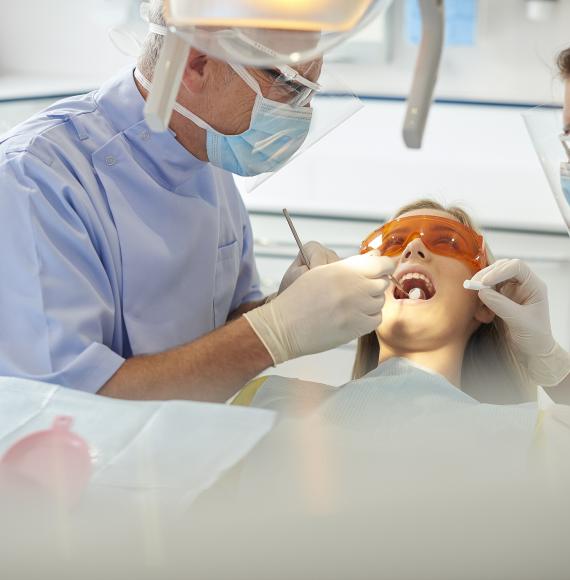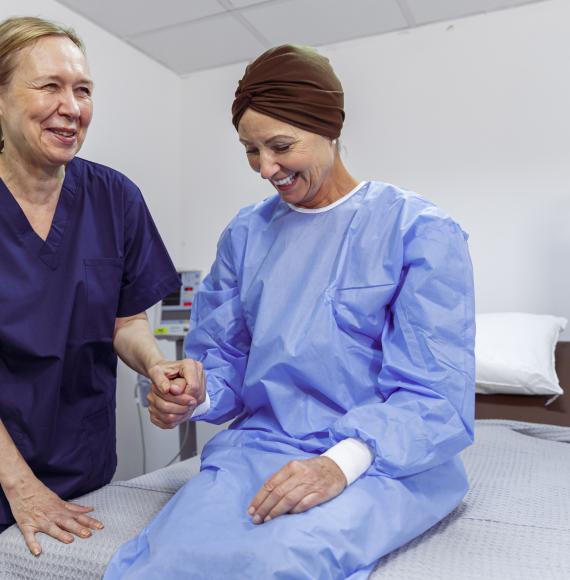In the drive to eliminate carbon emissions, the focus among policymakers and businesses to date has been on electricity generation and energy efficiency. Consequently, the carbon intensity of electricity generated in the UK has more than halved in the past ten years – but there’s been no such decarbonisation in the provision of heat. Providing heat for hot water, space heating and industrial processes accounts for more than a third (37%) of the UK’s greenhouse gas emissions.
Switch on to heating emissions
In the health sector, decarbonising heat is a major challenge. The NHS has an ambition to be the world’s first net zero national health service, and aims to reach net zero from its directly controlled emissions by 2040.
So far, energy efficiencies and renewable sourcing have helped the NHS make great strides in reducing Scope 2 emissions – associated with the electricity it purchases. But now there’s an urgent need to address Scope 1 emissions, which come directly from NHS-owned premises. Emissions from hot water and space heating systems alone account for 80% of NHS greenhouse gas emissions.
Complex estates and legacy systems
The huge variety and complexity of buildings and heating systems within the NHS estate present a significant challenge to heat decarbonisation. Many large hospitals constructed more than 20 years ago use steam for space and hot water heating, as well as for some sterilisation and humidification processes. Steam heating systems are usually gas powered, and require high-pressure conditions to be maintained throughout the network.
Other hospitals have pressurised high-temperature (130°C) or medium-temperature (110°C) water systems for space heating, or low-temperature (below 100°C) un-pressurised systems. More recently, low-carbon heating technologies have brought about the introduction of even lower temperature heating systems (below 60°C).
Exploring the decarbonisation options
So how do you convert a vast hospital complex, currently using steam or high-temperature water heating systems, to a low-carbon alternative? While there are numerous options available, many are unsuitable for hospitals due to high costs, space requirements or reliability issues.
Biomass boilers, for example, have high particulate and NOx emissions that make them unsuitable for most hospital sites. Biomethane boilers use anaerobic digestion to produce methane as a replacement for natural gas. But the size of anaerobic digesters required to supply enough methane for an entire hospital means they are economically – and practically – unviable.
Solar-powered water heating can be used to provide reliable hot water during the summer, but during UK winters there is insufficient sunlight to produce enough heat, meaning solar thermal alone is not a year-round solution.
Hydrogen is likely to have a role to play in decarbonisation for the UK, by reducing demand for gas. It is already used in some large-scale industrial processes, where combustion is required to generate high temperatures. Currently, these networks predominantly use ‘grey’ hydrogen, the production of which generates carbon emissions. Green hydrogen, which is produced using electrolysis with no associated carbon emissions, is unlikely to be widely available until around 2040 – too late to meet the NHS zero-carbon target.
One simple option is to convert existing gas boilers to electricity – heating the water with an electric coil. This could be used in combination with solar thermal, to provide a back-up when the sun isn’t shining, and to meet the requirement for water to be heated to above 80°C weekly to prevent Legionella. However, electric boilers are an extremely expensive way to provide heating.
Focus on heat pumps and district networks
Electric heat pumps – whether ground source or air source – offer a much more promising solution for hospitals. These systems extract latent heat from either the ground or the air in a highly energy-efficient process. They are a very cost-effective way to use electricity to generate heat. If renewable energy is used to power the pumps, they are completely carbon-free. The conversion of electricity to heat using these pumps is extremely efficient up to temperatures of around 60°C, but the coefficient of performance falls off dramatically at higher temperatures.
To maximise the benefits of a low-temperature heating system, hospitals will need to upgrade or replace many of their secondary systems, such as air handling units and radiators, alongside making improvements to building insulation.
Specialist heat pumps are available that use ammonia as the refrigerant. These enable higher water temperatures to be achieved efficiently – so that secondary heating infrastructure may not need to be replaced. However, due to the poisonous nature of ammonia, a separate energy centre may need to be constructed away from the main hospital site, to meet safety requirements.
The only other feasible low-carbon heating solution for hospitals is to connect to a district heat network. If the hospital is located close to such a network, and if that network is low or zero carbon, then this represents the simplest and most cost-effective way for hospitals to decarbonise their heat systems.
Reducing demand for heat
As well as looking at how zero-carbon heat is generated, hospitals need to consider the demand side. Improving the thermal efficiency of buildings is an important part of enabling estates to run efficiently with lower-temperature heating systems, while maintaining the mandatory room temperatures required for many NHS services.
The first step is to complete a full condition survey of the building fabric, from glazing and roofing to cavity wall insulation, so that detailed plans can be drawn up to enhance thermal efficiency wherever possible.
Creating bespoke decarbonisation plans
There is no one-size-fits-all solution for decarbonising heat systems in the NHS. Every hospital is different, with different infrastructure and secondary systems, different levels of service provision, different building designs in varying types of location. Every hospital needs its own bespoke zero-carbon roadmap or heat decarbonisation plan.
That’s where expert support is required. EQUANS has the expertise, resources and track record to help hospitals plan and deliver large-scale decarbonisation projects. Our specialists offer an end-to-end solution, from initial building surveys and zero-carbon planning, to implementing the new systems and maintaining them for the long term.



















